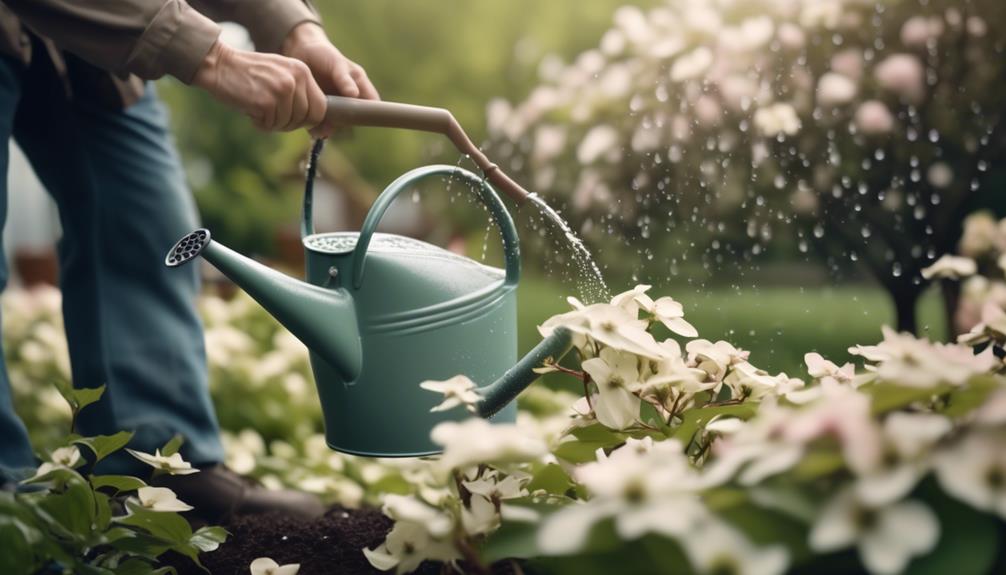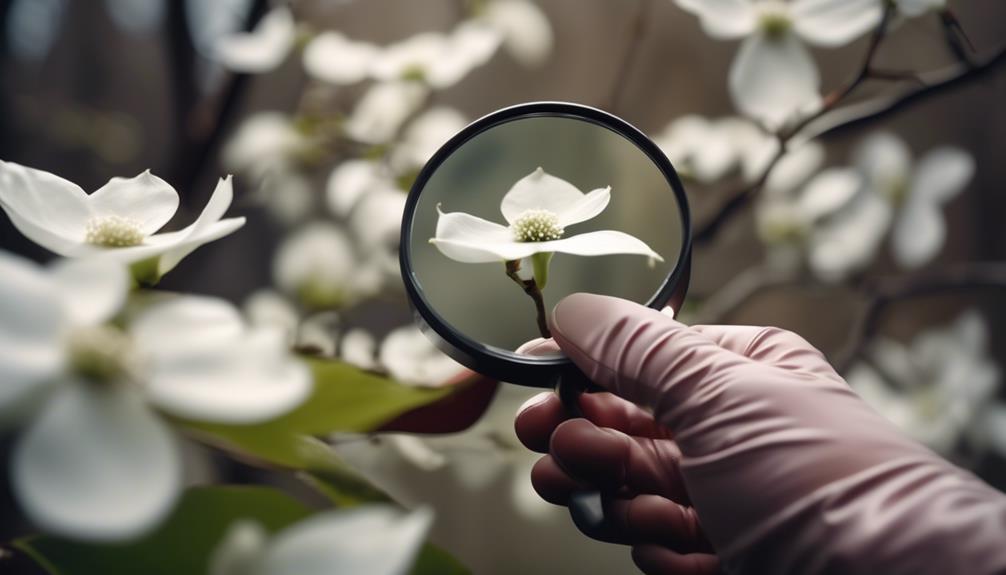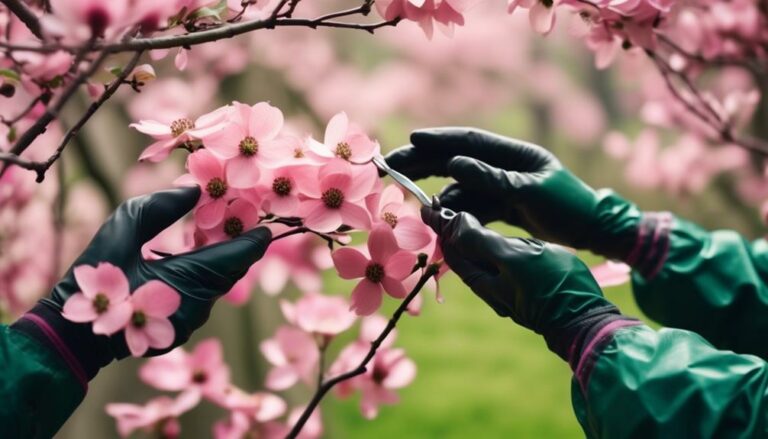What Are the Best Tips for Caring for Dogwood Flowers in a Garden?
Did you know that dogwood flowers are not only beautiful, but they also have a rich history? With their delicate blooms and vibrant colors, it's no wonder that these flowers are a popular choice for gardens.
However, caring for dogwood flowers requires some special attention. In this discussion, we will explore the best tips for ensuring the health and beauty of your dogwood flowers. From choosing the right variety to providing the proper care, you will discover valuable insights that will help you create a thriving garden.
So, let's dive into the world of dogwood flowers and uncover the secrets to success!
Choosing the Right Dogwood Variety

When selecting the perfect dogwood variety for your garden, consider the flower type, foliage, fruiting options, growth rates, and size for small gardens.
For a beautiful floral display, Rutgers dogwoods like Constellation, Stellar Pink, and Ruth Ellen are excellent choices. If you prefer a more unique look, Japanese dogwoods such as China Girl and Miss Satomi offer a variety of flower colors.
When it comes to foliage, consider Wolf Eyes for variegated leaves or Rainbow and Cornus florida Appalachian Joy for vibrant fall colors. If you're interested in fruiting options, native flowering dogwood, Chinese dogwood, and Cornelian cherries are worth exploring.
It's important to note that dogwoods grow best when planted in partial shade, but full sun must be provided to ensure proper flower production. Additionally, make sure to water your dogwood regularly and provide well-drained soil for optimal growth.
Proper Planting Techniques
To ensure the successful growth and development of your dogwood flowers, it's essential to follow proper planting techniques. Here are three tips to help you get started:
- Soak the roots: Before planting your dogwood tree, soak the roots in water for about an hour. This will ensure that the roots are well-hydrated and ready to establish themselves in their new environment.
- Prepare the soil: Dig a wide hole that's about twice the width of the tree's root ball. Add organic matter, such as compost or well-rotted manure, to the soil. Mix it thoroughly with the existing soil to improve drainage and provide essential nutrients for your dogwood's growth.
- Stake and mulch: Once planted, stake the tree securely to provide support while the roots establish themselves. Be sure to mulch around the base of the tree with a layer of organic mulch, such as wood chips or bark. This will protect the roots from extreme temperatures and prevent damage during lawn mowing.
Watering and Fertilizing Tips

Now that you have successfully planted your dogwood tree, it's time to discuss the important aspects of watering and fertilizing to ensure the health and vitality of your beautiful flowers.
Dogwood trees require deep but infrequent watering to encourage deep root growth. It's crucial to keep the soil consistently moist, but avoid waterlogging, especially for newly planted dogwoods.
Slow-release, balanced fertilizers should be used sparingly, especially in poor soil conditions. Instead of excessive fertilization, focus on providing proper soil conditions. If you're unsure about the specific fertilizer requirements for dogwood trees, it's always a good idea to seek professional advice.
Proper watering and fertilizing will help your dogwood trees grow strong and healthy, providing you with lovely flowering dogwood trees that offer shade, vibrant foliage colors, and minimal issues with powdery mildew.
Remember to also incorporate regular pruning and mulching into your tree care routine.
Pruning and Shaping Dogwood Flowers
When it comes to pruning and shaping dogwood flowers, proper technique and timing are essential to maintaining the health and beauty of your tree. Follow these tips to ensure the best care for your dogwood:
- Prune in the right season: It's best to prune dogwood trees in late fall or winter when they're dormant. This minimizes stress on the tree and encourages healthy growth in the spring.
- Use the right tools: Make sure to use clean and sharp pruning tools to prevent disease transmission while shaping the tree. This will help maintain the tree's overall health.
- Remove dead or damaged branches: Regularly inspect the tree for any dead or damaged branches and remove them. This not only improves the tree's appearance but also prevents further damage and potential disease.
Protecting Against Pests and Diseases

Regular inspection of your dogwood tree is crucial for protecting against pests and diseases and maintaining its overall health. To keep your dogwood flowers thriving in your garden, it's important to take steps to protect them from potential threats.
Start by ensuring the bark is protected, as this can prevent pest infestations and maintain the health of the tree. Anthracnose disease, wood borers, and mildew are common problems that can affect dogwood trees. To prevent these issues, make sure your tree is growing happily by providing proper care, such as thorough preparation, support checking, mulch renewal, irrigation during dry spells, and annual feeding with rhododendron feed.
Additionally, powdery mildew, a dusty white coating on foliage, can be treated with fungicide. By being proactive and taking these precautions, you can protect your dogwood flowers and enjoy a healthy, vibrant garden.
Conclusion
In conclusion, caring for dogwood flowers in a garden requires attention to their specific needs. By choosing the right variety, planting in the proper soil and location, providing regular watering and mulching, and pruning when necessary, you can ensure the health and beauty of your dogwood flowers.
Don't forget to protect against pests and diseases to keep them thriving. With these tips in mind, your garden will be filled with stunning dogwood blooms for years to come.







